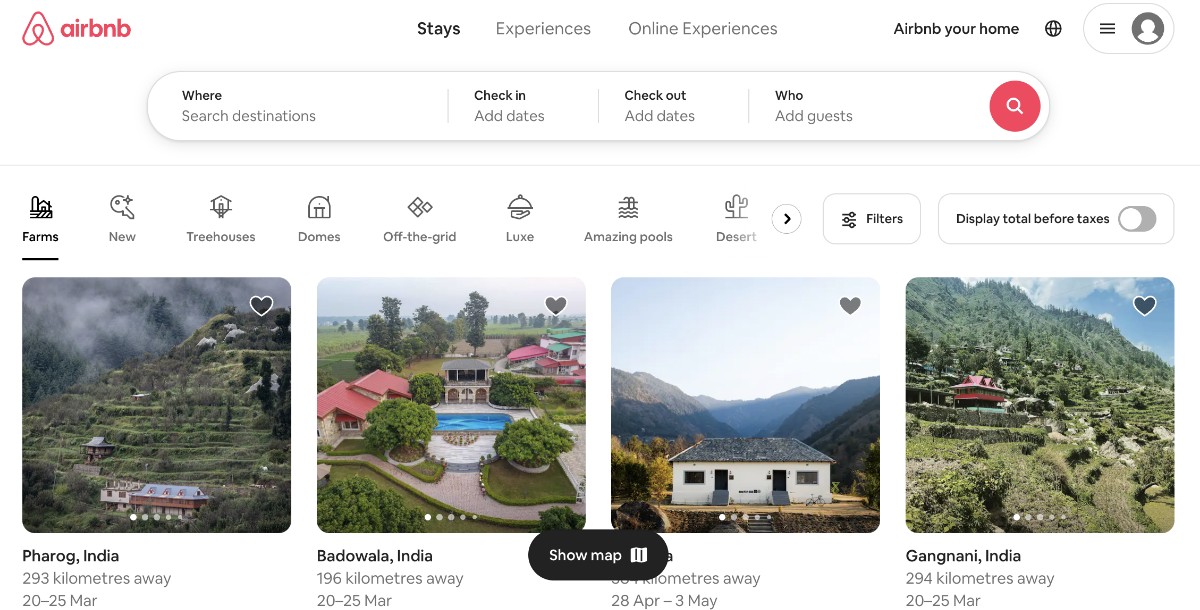Social Media Customer Service: Insights, Importance, 10 Best Practices

Social media has become an undeniable force in the way businesses connect with customers. It's a fantastic platform for building brand awareness and fostering relationships, but it can also be a double-edged sword. A single negative customer service experience [what is customer service] on social media can quickly snowball into a PR nightmare.
That's where customer service through social media comes in. It's the art of providing exceptional customer support [customer support guide] through social media channels. In today's digital age, it's more important than ever to deliver a seamless customer experience across all platforms.
This blog dives deep into 10 best practices to elevate your social media customer service game and turn your followers into brand advocates.
What is Social Media Customer Service
The landscape of social media has transformed it from a platform purely for marketing and advertising into a vital space for customer service. The rise of conversational business, where customers connect with brands through messaging apps on social media, underscores this shift.
Customer service through social media has become an essential element of any contemporary customer support guide. Customers today expect a seamless experience, and social media provides a direct line of communication that goes beyond traditional phone calls and emails.
Offering omnichannel support—where customer service is available across multiple channels—through social media presents challenges for businesses of all sizes, both B2B (business-to-business) and B2C (business-to-consumer). Smaller companies might struggle with staffing to manage the influx of customer requests, while larger companies with high engagement may find it difficult to personalize interactions with every single customer.
Regardless of size, the ever-increasing customer service expectations demand that businesses adapt. Integrating social media into your customer service strategy allows you to provide a more convenient and accessible experience for your customers, fostering stronger brand loyalty and positive relationships.
Importance of Social Media Customer Service
The importance of customer service in today's digital age cannot be overstated, especially when it comes to customer service through social media. Businesses are increasingly leveraging social media platforms to enhance their customer service efforts, recognizing the vast potential these platforms hold for building relationships, managing reputation, and driving customer satisfaction. Here's a look at why prioritizing customer service on social media is crucial, along with a nod to an innovative solution that simplifies the process:
Immediate Response Expectations
In the fast-paced digital world, customers expect quick, if not instant, responses to their inquiries or complaints. Implementing customer service through social media meets these expectations, fostering a sense of trust and reliability among your audience.
- Public Visibility Enhances Brand Image
- Opportunity for Personalized Engagement
- Crisis Management and Reputation Control
- Insights and Feedback for Improvement
- Cost-Effective Support Channel
- Integration with Customer Support Chatbots
Positive interactions on social media are visible to a wide audience, showcasing a company’s dedication to customer support. This visibility can significantly enhance a brand's image and attract new customers.
Social media platforms offer unique opportunities to personalize customer interactions. Personalized responses can significantly boost customer satisfaction and loyalty.
Effective social media customer service allows businesses to quickly address and resolve issues before they escalate, helping to maintain and control the brand's reputation.
Customer interactions on social media provide valuable feedback and insights into customer needs and expectations, helping businesses improve their products and services.
Compared to traditional customer service channels, social media provides a more cost-effective way to manage customer queries and issues, allowing for the allocation of resources to other areas of need.
Utilizing AI-driven solutions like customer support chatbots can streamline customer service processes. Platforms like Appy Pie offer an easy way to implement AI customer service chatbots without the need for programming skills. This innovation enhances efficiency, ensuring that customers receive instant, 24/7 support for basic inquiries and seamless escalation to human agents for more complex issues.
Incorporating customer service into your social media strategy is not just an addition to your customer support toolkit; it's a vital component of maintaining a competitive edge in today's digital marketplace. By leveraging platforms like Appy Pie for AI customer service chatbots, businesses can significantly improve their customer service capabilities, offering prompt, efficient, and personalized support that meets modern customer expectations.
10 Best Practices for Social Media Customer Service
Social media has become the go-to channel for customer interaction. It's a double-edged sword: a fantastic tool for building brand awareness and fostering relationships, but also a breeding ground for frustration if customer service inquiries aren't handled well.
Here are 10 best practices to transform your social media channels into a haven for exceptional customer service:
- Collaborate Team for Unified Customer Service
- Identify Customer Platforms for Targeted Engagement
- Use Sentiment Analysis for Proactive Support
- Cross-Departmental Collaboration to Enhance the Customer Experience
- Integrate Technology for Streamlined Support
- Prioritize Inquiries for Focused Attention:
- Adopt an Omnichannel Approach for Consistency
- Leverage AI for Efficiency and Engagement
- Transition to Private Conversations When Necessary
- Turn Feedback Into Opportunities for Improvement
The cornerstone of exceptional customer service lies in a well-coordinated effort between your customer support and social media teams. This ensures that your brand presents a unified front across all platforms, crucial for maintaining consistency in customer interactions.
Solution: Develop a detailed action plan that includes guidelines for engagement, response timelines, escalation procedures, and a clear division of responsibilities. Regular training sessions can help teams stay updated on protocols, ensuring every customer interaction is smooth and effective.
Effective customer service through social media requires being active on platforms where your customers spend their time. This tailored approach ensures your efforts are focused and impactful.
Solution: Conduct audience research to understand which platforms your customers prefer and why. Use this data to allocate resources wisely, ensuring your team can actively engage with customers on their preferred platforms, from Facebook and Twitter to Instagram and beyond.
Implementing knowledge base software and sentiment analysis tools offers insights into customer sentiment, enabling proactive support. This strategic move can transform the way you interact with customers, anticipating needs and addressing concerns before they escalate.
Action: Regularly monitor and analyze customer feedback, brand mentions, and general sentiment across social channels. This analysis helps in identifying trends, understanding customer expectations, and tailoring your support approach accordingly.
Sharing insights and data between your social media and customer support teams is pivotal for providing a cohesive customer experience. This collaboration bridges the gap between different touchpoints in the customer journey, ensuring consistency and accuracy in information provided.
Benefit: Establish a system for regular information exchange and joint meetings between teams to discuss insights, challenges, and strategies. This collaborative environment fosters innovation and improves the overall quality of customer service.
Integrating customer service chatbots and social listening tools into your customer service strategy can significantly enhance efficiency and responsiveness. These technologies automate routine tasks and ensure your team focuses on interactions that require a human touch.
Solution: Explore and implement tools like customer support chatbots, which can handle FAQs and direct customers to relevant resources, freeing up agents to tackle more complex inquiries. Integrating these tools with your CRM system can provide a seamless experience for both customers and agents.
With the volume of interactions on social media, distinguishing between mentions that require immediate action and those that do not is crucial for efficient customer service.
Strategy: Leverage customer service software that categorizes social media mentions by urgency and relevance. This helps in prioritizing responses and ensures that critical issues are addressed promptly, improving customer satisfaction and trust.
An omnichannel strategy is key to delivering a consistent and seamless customer experience across all channels. This approach acknowledges the interconnected nature of modern customer journeys, where interactions can span multiple platforms.
Advantage: Use customer experience chatbots and other omnichannel tools to maintain a holistic view of each customer's
history and preferences. This information allows agents to provide personalized, informed support, enhancing the customer's overall experience with your brand.
Incorporating AI, such as customer support chatbots, into your social media strategy can significantly improve response times and customer engagement.
Tip: Deploy AI technologies to manage high-volume inquiries efficiently, ensuring that customers receive timely
acknowledgments and support. Intelligent routing can also direct more complex issues to the most suitable human agent, balancing automation with a personal touch.
Not all customer interactions are suited for public view, especially when they involve sensitive information or detailed support needs.
Guideline: Develop criteria for moving conversations to private channels, such as direct messages, ensuring customer privacy and providing a space for more in-depth support. This strategy helps in maintaining discretion while still offering comprehensive assistance.
Negative feedback is an invaluable source of insight for any business committed to improving its customer service. Engaging with and learning from criticism shows a dedication to customer satisfaction and continuous improvement.
Approach: Actively seek out and respond to feedback across all social channels, using it as a springboard for enhancing your service offerings. This open and proactive stance not only improves your services but also demonstrates to customers that their opinions are valued and acted upon.
How to Implement Strategies for Social Media Customer Service
By expanding on these strategies and keeping the importance of customer service at the forefront of your social media efforts, businesses can significantly improve their customer interactions and satisfaction rates. Here's how to further implement and benefit from each strategy:
- Support Community Around Your Brand
- Train and Develop for Your Team
- Measure Success and Adapt Strategies
- Leverage User Feedback for Content Creation
- Personalize Customer Interactions
- Implement Feedback Loops
Building a supportive community on social media can significantly amplify the positive impacts of your customer service efforts.
Strategy: Encourage interaction among your followers by hosting Q&A sessions, sharing user-generated content, and creating forums for discussion. A strong community can provide peer-to-peer support, reducing the volume of direct inquiries and fostering a positive brand image.
The digital landscape and customer expectations are always evolving, making continuous learning and development essential for your customer service team.
Action: Invest in regular training sessions that cover the latest customer service best practices, new social media features, and updates to your products or services. Empowering your team with knowledge and skills ensures they can provide the best possible support to your customers.
To continuously improve customer service through social media, it's crucial to measure your performance and adapt your strategies based on data-driven insights.
Solution: Utilize analytics tools to track key metrics such as response time, customer satisfaction scores, and resolution rates. Regularly review these metrics to identify trends, areas for improvement, and successful strategies that can be expanded upon.
User feedback and inquiries can provide a wealth of content ideas, helping to address common questions and concerns through your social media channels.
Benefit: By creating content that answers frequently asked questions or explains how to use your products, you can proactively address customer needs and reduce the volume of incoming inquiries. This approach not only improves the customer experience but also enhances your content marketing efforts.
In an era where customers crave personalized experiences, tailoring your interactions on social media can set your brand apart.
Strategy: Use customer data to personalize your responses, addressing customers by name and referencing past interactions when appropriate. This level of personalization makes customers feel valued and understood, boosting loyalty and satisfaction.
Creating mechanisms for feedback within your customer service process ensures that insights from social media interactions inform broader company strategies.
Action: Establish regular feedback loops between your social media customer support team and product development, marketing, and other relevant departments. This collaborative approach ensures that customer insights contribute to company-wide improvements and innovations.
By focusing on these expanded strategies and maintaining a customer-centric approach, businesses can harness the full potential of customer service through social media. This not only enhances the customer experience but also drives brand loyalty, advocacy, and growth in the competitive digital marketplace.
Dos and Don’ts of Social Media Customer Service
Social media has become the go-to platform for customer interaction. It's a fantastic tool for building brand awareness and fostering relationships, but it can also turn into a breeding ground for frustration if customer service inquiries aren't handled well.
By following these key Dos and Don'ts, you can establish yourself as a customer service champion on social media:
| Do | Don't |
|---|---|
| Be Responsive (Aim for within 1-2 hours during business hours) | Leave Customers Hanging |
| Personalize Your Touch (Friendly and approachable tone) | Be Robotic in Your Responses (Scripted language) |
| Embrace the Power of Public Responses (Showcases commitment to customer service) | Shy Away from Negative Feedback (Address it head-on) |
| Listen Actively (Use social listening tools) | Engage in Public Arguments (Move to private message if needed) |
| Offer Solutions, Not Excuses (Focus on resolving the issue) | Forget the Power of Social Media Analytics (Track response times and customer satisfaction) |
By implementing these best practices, you can transform your social media channels into a haven for exceptional customer service. This, in turn, fosters brand loyalty and cultivates a positive online community around your brand. Remember, social media customer service is an ongoing process. Regularly analyze your performance to identify areas for improvement and ensure you're delivering an exceptional customer experience that keeps your audience engaged and coming back for more.
Best Examples of Social Media Customer Service
Social media has become the front line of customer service, offering a direct line of communication between brands and their audience. Companies that excel at social media customer service stand out from the crowd, building brand loyalty and fostering positive customer interactions. Here are 5 shining examples:
- Warby Parker: Adding a Dose of Humor
- Zappos: Going the Extra Mile
- Airbnb: Building a Community
- JetBlue: Taking Ownership and Responding with Empathy
- Samsung: Embracing User-Generated Content

Warby Parker, the trendy eyewear brand, is known for its witty and engaging social media presence. Their customer service team seamlessly blends humor with helpfulness, creating a delightful experience for customers on platforms like Twitter and Instagram.
For example, a customer tweeted a photo of their glasses perched precariously on a cat, jokingly asking if Warby Parker offered "cat-proof" frames. The Warby Parker team responded with a playful quip about offering "laser pointer resistance upgrades" and provided a link to their durable frames selection. This lighthearted interaction demonstrates their customer focus and injects personality into their brand.

Zappos, the online shoe retailer, has built a legendary reputation for exceptional customer service, and their social media presence reflects that commitment. Their team on Twitter and Facebook is known for going above and beyond to resolve customer issues and create positive experiences.
A customer might tweet about a delayed package. The Zappos team promptly acknowledges the concern, investigates the issue, and provides regular updates. They might even offer a discount or express shipping on the customer's next purchase as a token of apology for the inconvenience. This proactive approach and commitment to exceeding expectations solidify customer loyalty.

Airbnb, the hospitality marketplace, fosters a sense of community on social media platforms like Facebook and Instagram. Their customer service team doesn't just answer questions; they actively engage with hosts and guests, creating a welcoming and supportive environment.
They might share travel tips based on guest inquiries, highlight unique listings, or even feature user-generated content showcasing positive Airbnb experiences. This focus on community building fosters trust and strengthens the connection between Airbnb and its users.

JetBlue, the airline known for its focus on humanity, demonstrates genuine empathy and takes ownership of issues on social media like Twitter and Facebook. When a customer tweets about a frustrating flight experience, the JetBlue team acknowledges their concern and apologizes for the inconvenience.
They then work diligently to resolve the issue, offering solutions like rebooking flights or providing travel vouchers. This commitment to taking responsibility and addressing customer concerns head-on builds trust and demonstrates JetBlue's dedication to passenger satisfaction.

Samsung, the tech giant, leverages the power of user-generated content on social media platforms like Instagram and YouTube. Their customer service team actively seeks out posts featuring Samsung products and engages with users who share their experiences.
They might comment on a photo showcasing a stunning shot captured on a Samsung phone, offering photography tips or expressing appreciation for the user's creativity. This approach not only highlights the capabilities of their products but also creates a sense of connection with their audience.
These are just a few examples of companies excelling at social media customer service. By prioritizing prompt responses, adding a human touch, and building a community, brands can leverage social media to cultivate lasting customer relationships and achieve social media success.
Conclusion
In summary, effective customer service through social media is crucial for enhancing brand reputation and customer loyalty. By leveraging strategies like prompt responses, personalization, and technological integration, businesses can improve their social media interactions significantly. Appy Pie's Chatbot platform exemplifies the integration of AI and automation in customer service, offering solutions that include customer service chatbots, ticketing systems, and live chat software to streamline customer queries and improve service efficiency.
Embracing these tools and continuously seeking improvement based on customer feedback are key to excelling in social media customer service. With the right approach and technology, such as Appy Pie's Chatbot, businesses can meet modern customer expectations, turning challenges into opportunities for growth. This commitment to innovation and customer satisfaction is what sets successful brands apart in the digital age.
Related Articles
- 10 Best Expensify Integrations for Expense Reports
- Kajabi vs. ClickFunnels: Which Is Better to Use in 2024?
- 8 Best Tips to Create Effective Customer Surveys
- 340+ Short Captions for Instagram for Girls & Boys [2024]
- 4 Trello Calendar Views to Simplify Project Management
- White Space: A Complete Guide to its Usage in Design
- Seq1F1B: Efficient Sequence-Level Pipeline Parallelism for Large Language Model Training
- How to Add Live Chat to Your Website
- 52 Graphic Designers on Instagram You Must Follow for Inspiration
- How Automated Customer Service Helps Scale Your Customer Support
